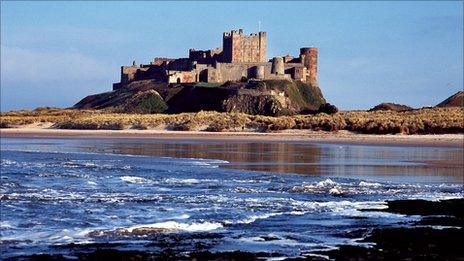Skeletal remains of 110 Anglo-Saxons go on display near Bamburgh
- Published
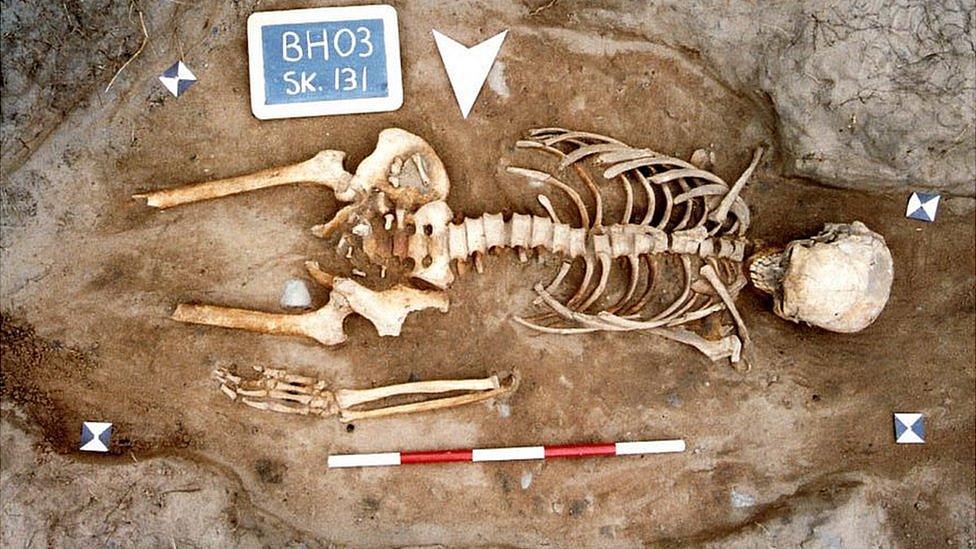
The remains were unearthed between 1998 and 2007
A crypt with the remains 110 Anglo-Saxons unearthed in Northumberland and laid to rest 1,400 years after they died has opened to the public.
The skeletons were discovered in dunes near Bamburgh Castle during excavations carried out between 1998 and 2007.
They were interred in the crypt of nearby St Aidan's Church in specially designed zinc-lined boxes.
Now the crypt has opened to visitors thanks to £355,600 of Heritage Lottery funding.
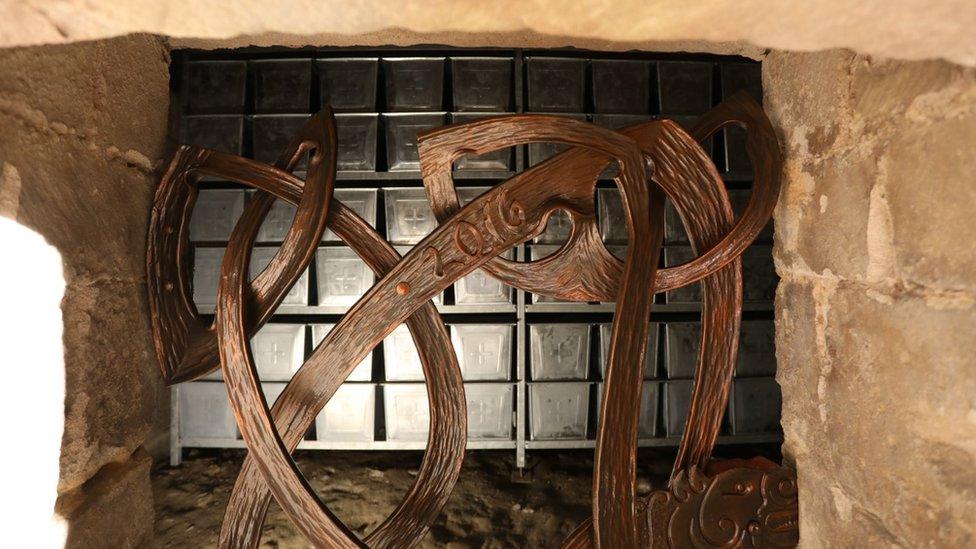
The remains were laid to rest in zinc-lined boxes in 2016

Less than 10% of the Anglo-Saxons found had come from Bamburgh
The money was spent on improving access to the 12th Century crypt and installing a digital, interactive display which tells the history of Bamburgh.
Following the discovery, the skeletons were examined by experts from the Bamburgh Research Project and Durham University.
The remains are thought to be of some of the earliest Christian converts in the north of England.
'Fragile boundaries'
Isotope analysis also revealed less than 10% of the people came from Bamburgh, with most originating in the wider British Isles, particularly Western Scotland and even as far away as Scandinavia and the Mediterranean.
Vicar of St Aidan's, the Revd Louise Taylor-Kenyon, said: "The idea of country boundaries was fragile.
"It is a reminder that this nation's history has continually been one of people visiting, settling, intermingling, and creating relationships and a more diverse society as a consequence."
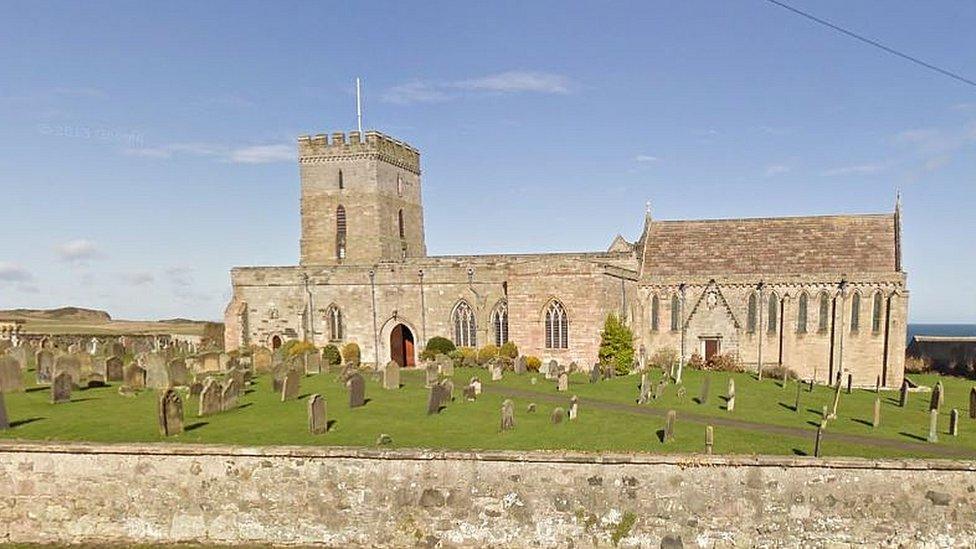
The remains were interred in the crypt of nearby St Aidan's Church
Experts said the excavation site where the remains were found was once a cemetery from about 650-700 AD and was probably associated with the Royal Court of King Oswald, external.
The Bamburgh Bones project is managed by the Bamburgh Heritage Trust, Durham University and the Northumberland Coast AONB Partnership.
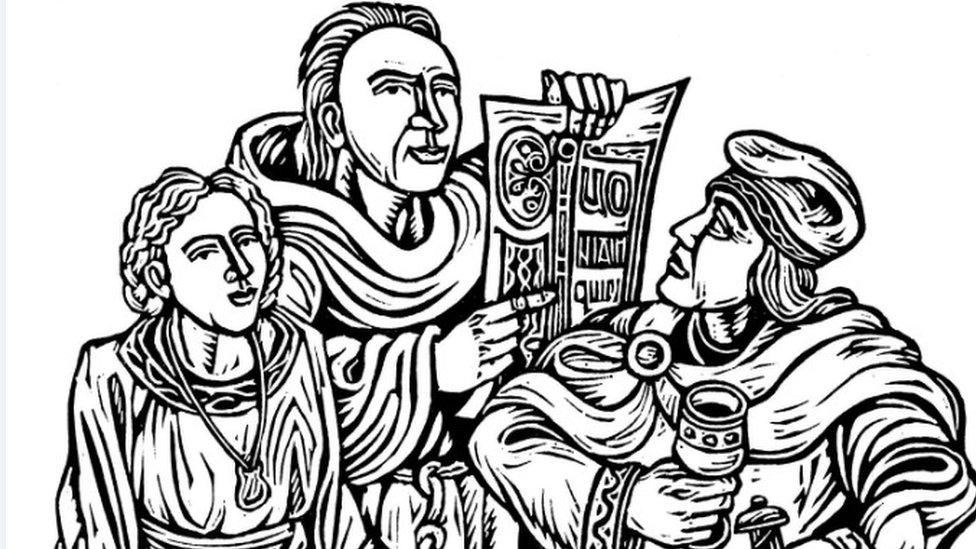
Lottery funding has paid for a new interactive display in the crypt telling the history of Bamburgh
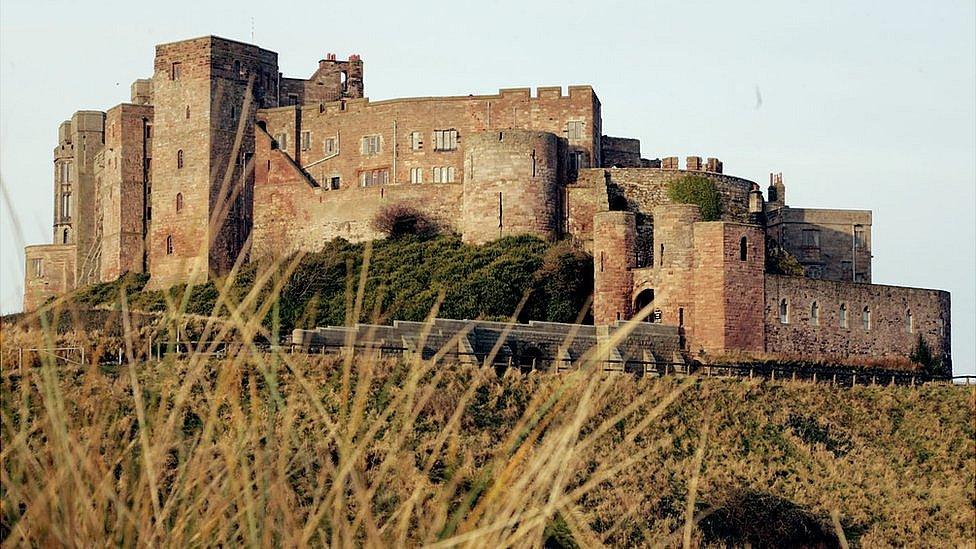
The skeletons were discovered in sand dunes near Bamburgh Castle
Related topics
- Published24 June 2016
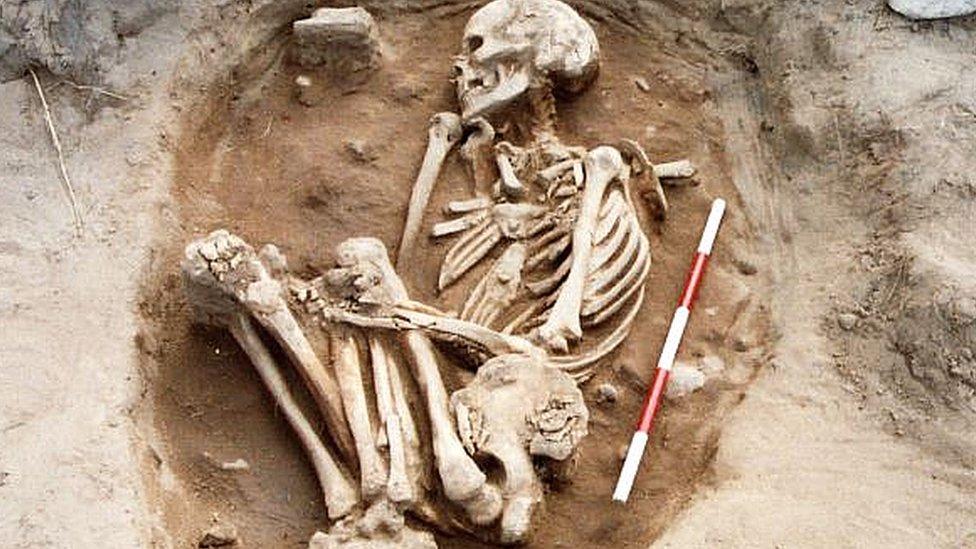
- Published13 April 2014

- Published7 July 2011
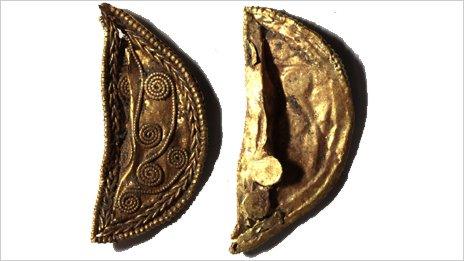
- Published21 April 2011
